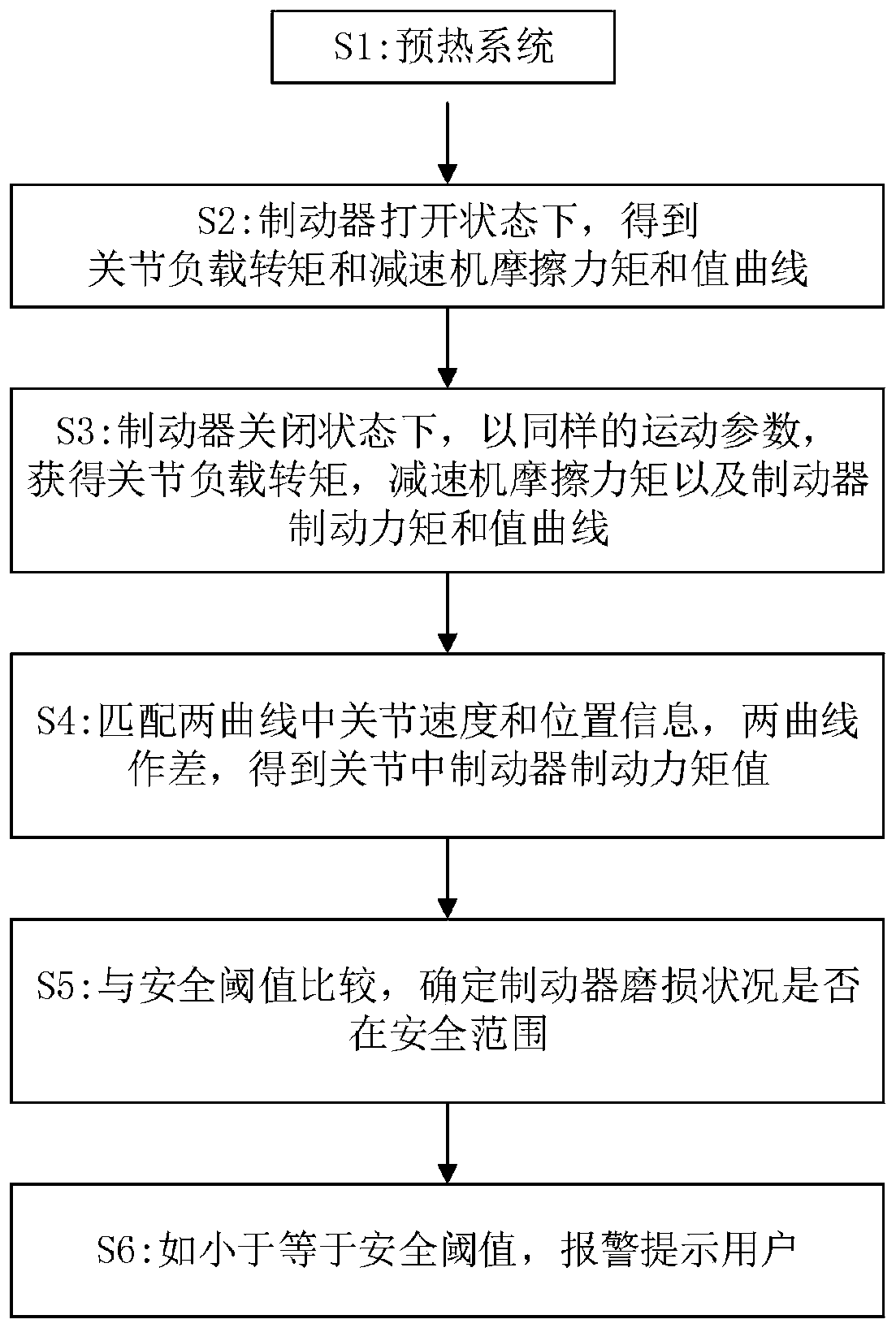Method for detecting abrasion of robot joint electromagnetic brake
A technology of robot joints and electromagnetic brakes, applied in manipulators, manufacturing tools, etc., can solve problems such as the decrease of brake braking torque, the difficulty of detection, and the difficulty of installing sensors, so as to improve safety, improve assembly process, The effect of flexible and convenient operation
- Summary
- Abstract
- Description
- Claims
- Application Information
AI Technical Summary
Problems solved by technology
Method used
Image
Examples
Embodiment Construction
[0019] Preferred embodiments of the present disclosure will be described in more detail below with reference to the accompanying drawings. Although preferred embodiments of the present disclosure are shown in the drawings, it should be understood that the present disclosure can be embodied in various forms and should not be limited to the embodiments set forth herein. Rather, these embodiments are provided so that this disclosure will be thorough and complete, and will fully convey the scope of the disclosure to those skilled in the art.
[0020] attached figure 1 A flow chart of a method for detecting wear of an electromagnetic brake of a robot joint according to an exemplary embodiment is shown. Such as figure 1 As shown, the method mainly includes the following steps:
[0021] S2, S3: When the brake is on and off respectively, make the joint run for the same distance from a fixed position at the same minimum speed at a constant speed, and the servo safety driver will con...
PUM
 Login to View More
Login to View More Abstract
Description
Claims
Application Information
 Login to View More
Login to View More - R&D
- Intellectual Property
- Life Sciences
- Materials
- Tech Scout
- Unparalleled Data Quality
- Higher Quality Content
- 60% Fewer Hallucinations
Browse by: Latest US Patents, China's latest patents, Technical Efficacy Thesaurus, Application Domain, Technology Topic, Popular Technical Reports.
© 2025 PatSnap. All rights reserved.Legal|Privacy policy|Modern Slavery Act Transparency Statement|Sitemap|About US| Contact US: help@patsnap.com

